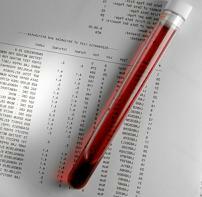 The abbreviation ALT stands for the blood index of enzymes alanine aminotransferase, AsAT - asparagine aminotransferase. The indicators of AST and ALT are included in the biochemical blood test.
The abbreviation ALT stands for the blood index of enzymes alanine aminotransferase, AsAT - asparagine aminotransferase. The indicators of AST and ALT are included in the biochemical blood test.
They were discovered in medicine relatively recently. The blood test for AST and ALT is carried out jointly and, accordingly, their norm should be the same, and fully dependent on each other.
Such an indicator of tests, like an increase in ALT and AST in the blood 2 and more times, should make you think about the occurrence of certain diseases. First you need to understand what ALT and AST are. What is the norm of these compounds in the blood and what should be done if at least one indicator is elevated?
About what the increase in ALT and AST is above the norm
In adults, the content of ALT and AST in different organs is not the same, so increasing one of these enzymes may indicate a disease of a particular organ.
- ALT (ALaT, alanine aminotransferase)- an enzyme that is mainly contained in cells of the liver, kidneys, muscles, heart (myocardium - heart muscle) and pancreas. When they are damaged, a large amount of ALT comes out of the destroyed cells, which leads to an increase in its level in the blood.
- AST (ASAT, aspartate aminotransferase)- an enzyme that is also found in the heart cells (in the myocardium), liver, muscles, nerve tissues, and to a lesser extent in the lungs, kidneys, pancreas. Damage to these organs leads to an increase in the level of AST in the blood.
Basically, the norm of ALT and AST in the blood is completely dependent on the work of the most important parenchymal organ - the liver, which performs such functions as:
- Synthesis of protein.
- Production of biochemical substances necessary for the organism.
- Detoxification is the elimination of toxic substances and poisons from the body.
- Storage of glycogen - a polysaccharide, which is necessary for the full vital activity of the body.
- Regulation of biochemical reactions of synthesis and decay of most microparticles.
Normally, the blood levels of ALT and AST are dependent on sex. In an adult woman, the level of ALT and AST does not exceed 31 U / l. In men, normal ALT does not exceed 45 U / l, and AST 47 U / l. Depending on the age of the child, the level of ALT and AST changes, while the ALT content should not be above 50 U / L, AST - 140 U / L (from birth to 5 days) and not more than 55 U / L for children under 9 years.
Depending on the equipment used for the study, it is possible to vary the norms and reference values of the enzyme level. An increase in the rate of renewal of enzymes, damage to cells leads to an increase in the level of transaminases in the blood.
The causes of increased ALT and AST
Why do adults have ALT and AST elevated, what does it mean? The most likely cause of increased liver enzymes in the blood are:
- Hepatitis and other liver diseases (cirrhosis of the liver, fatty hepatosis - replacement of liver cells with fat cells, liver cancer, etc.).
- Increase in ALT and AST as a consequence of diseases of other organs (autoimmune thyroiditis, mononucleosis).
- Myocardial infarction is a necrosis (death) of a site of the heart muscle, as a result of which ALT and AST are secreted into the blood.
- Diffuse liver lesions that can be caused by alcohol, drugs and (or) the effect of the virus.
- Extensive injuries with muscle damage, as well as burns, are the cause of increased ALT in the blood.
- Acute and chronic pancreatitis.
- Metastases or neoplasms in the liver.
- Reaction to medicines.
- Admission of anabolic steroids.
AST and ALT are important indicators of the state of various organs. The increase in these enzymes indicates damage to organs, such as the liver, heart, muscles, pancreas, etc. Thus, the decrease in their level in the blood occurs independently when the underlying disease is eliminated.
Prevention
To ensure that the norm of the indicators does not exceed the allowed limits, it is recommended to avoid long-term medications.
If this is not possible due to a chronic illness, then it is better to regularly take the assay for ASAT so that it is not raised or in time to prevent a serious increase. Periodically, you need to visit a gastroenterologist and a hepatologist who will be able to identify a possible disease and prescribe a treatment.
What to do if ALT and AST are elevated
In order to quickly and objectively understand the true cause of increasing levels of activity of ALT and AST enzymes, it is necessary to additionally pass biochemical tests.
First of all, it is expedient to determine the levels of total bilirubin, alkaline phosphatase and GGTP (gamma-glutamyltransferase) and to assess the degree of preservation of the basic functions of the liver. To exclude the viral nature of liver damage (acute viral hepatitis), which is also accompanied by an increase in ALT and AST in the blood, it will be necessary to donate blood to specific antigens of viral hepatitis and specific antibodies to these antigens.
In some cases, the study of blood serum by PCR on the presence of DNA of HBV and HCV RNA is indicated.

How to choose probiotics for the intestine: a list of drugs.

Effective and inexpensive cough syrups for children and adults.

Modern non-steroidal anti-inflammatory drugs.

Review of tablets from the increased pressure of the new generation.
 Antiviral drugs are inexpensive and effective.
Antiviral drugs are inexpensive and effective.



